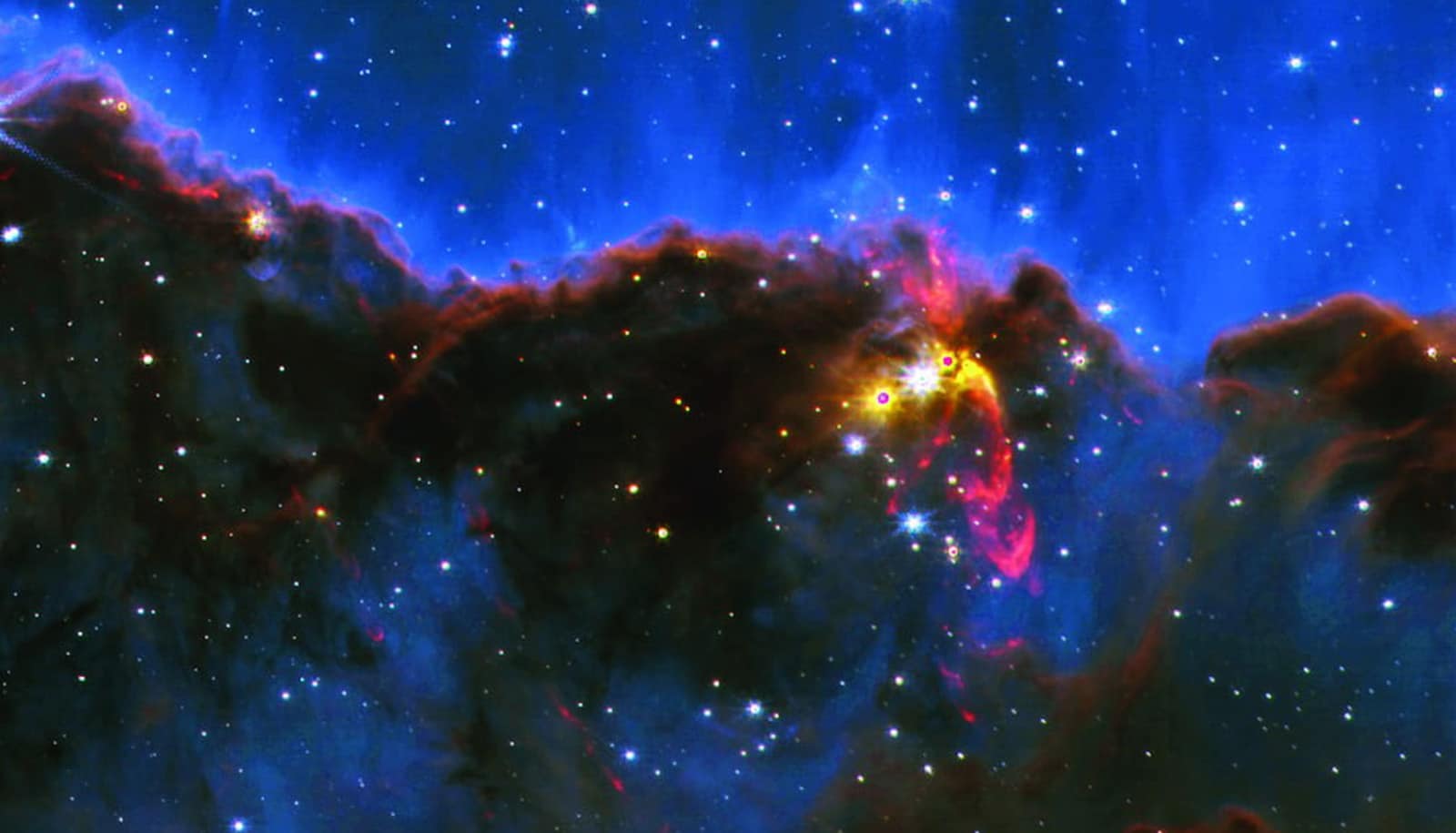Astronomers have presented the most detailed known images of the inner region of a planet-forming disk.
Resembling dusty infrared donuts, the images show unexpected moving structures in the disk around a young, massive star called V1295 Aquilae and confirm mysterious inner emissions reported in previous studies.
The star is six times more massive than the sun and 900 times more luminous. It’s only 100,000 years old; the sun is 4.5 billion years old.

Here, Noura Ibrahim, a doctoral candidate in astronomy at the University of Michigan and first author of the study in The Astrophysical Journal, explains the findings:
Why should we examine young stars?
Young stars give us the unique opportunity to observe how star systems form. Our understanding of how our solar system formed is limited, let alone systems that don’t look like ours.
With the launch of the Transiting Exoplanet Survey Satellite mission and James Webb Space Telescope, there has been a surge to detect, confirm, and characterize planets beyond our solar system, called exoplanets.
So far, we have over 5,000 confirmed exoplanets and over 6,000 potential candidates that don’t conform to what we see in our solar system. That is why we want to look at the early stages of planet formation and examine the disks where exoplanets will eventually form.
Why are these particular findings important?
We are using the first and only technology that is powerful enough to probe the circumstellar disks at such small scales. Our images and models revealed a more complex story of possibly moving structures and inner emissions, which raise more questions.
Also, we are demonstrating the power of interferometry (using two or more telescopes that work together) to perform cutting edge science at a fraction of the price of space telescopes, which can’t compare with our 50 times better resolution.
How does this paper advance the science and understanding of this field?
We are using interferometry to study protoplanetary disks, which is a relatively broad subfield to begin with. These disks host planet formation and eventually turn into full stellar systems that are similar to our solar system in some aspects and completely different in others. Until recently, we have only been able to image the outer disks using Hubble, ALMA, Keck, or VLT observatories, but the inner disk remained a mystery.
How did you image these inner disks?
To get to the necessary resolving power, the only technique we can use is long-baseline optical interferometry. Interferometry works by combining the light from multiple telescopes that are arranged at a certain distance away from each other.
We use the Center for High Angular Resolution Astronomy Array which is the largest optical and infrared interferometer in the world. The CHARA Array consists of six one meter telescopes arranged in a Y-formation which allows for a maximum resolving power equivalent to a single 331 meter diameter telescope. That’s bigger than The Big House—the University of Michigan stadium.
Our team, led by Professor John Monnier, has designed, built, and commissioned multiple infrared light combiners at the CHARA Array, which combine the light from all six telescopes simultaneously in different wavelength bands. In 2018, the team updated the Michigan InfraRed Combiner (MIRC-X) to add a state-of-the-art sensitive camera that can detect faint infrared light from the dusty disks.
When I joined the UM astronomy PhD program in 2020, I was able to start analyzing observations taken with MIRC-X in 2019 right away. While not obvious from this distance on Earth, V1295 Aql is almost 900 times brighter than the sun and its high luminosity made it a great target for our modeling and imaging goals. I honestly felt a little spoiled, because of how beautiful the data were.
Did anything about these findings challenge conventional wisdom?
Previous models of inner disk emissions theorized that the “cavity” between where the dusty disk ends and the star wasn’t all that dark. We already know that there is transparent dust-free gas in that cavity which would not produce light in infrared.
The dust in the disk we see glows in infrared radiation because it is being heated by the star. At a certain temperature, the heat is too high for the dust to withstand and it gets destroyed, so theoretically, we should not see any emission from the middle because the dust is destroyed. The fact that we do see light from the center, prompts the question of what is creating the opacity that is giving off light.
Source: University of Michigan



